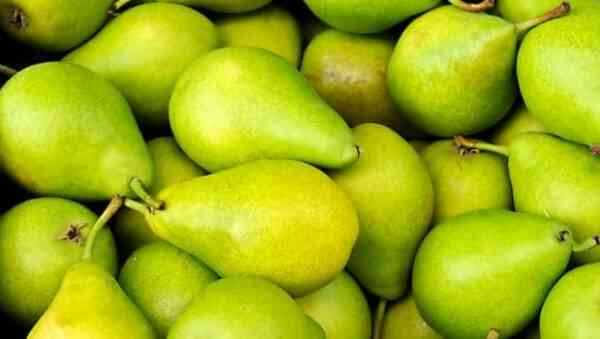Juicy and ripe pears are to the taste of many people. These fruits are a real storehouse of vitamins and nutrients. However, they are not very nutritious, but rich in fiber, and therefore they can be considered as a dietary product. Eating pears is not only pleasant, but also useful, in the event that, of course, you do not have any individual contraindications to their use. So if you haven’t tried them yet, now might be the time to fix it.
Interesting facts about pears
- Scientists have established that the pear began to be cultivated about three thousand years ago in ancient Greece.
- The pear should not be washed down with water to avoid heartburn.
- The wood of the pear is so strong, that it is sometimes used to make furniture and musical instruments.
- Most pears in the world are grown in China. You have probably seen flattened yellow Chinese pears on store shelves. They are incredibly juicy, but not too bright (interesting facts about China).
- Currently, there are over three thousand different varieties of pears.
- The largest pear was grown in Japan. Her weight was almost three kilograms.
- In the ancient Greek epic of Homer «Odyssey» the pear is mentioned as a «gift of the gods».
- The Chinese began to cultivate pears more than 3200 years ago.
- Pears are considered hypoallergenic fruits, however, those people who react to birch and alder pollen may also be allergic to pears.
- Doctors do not recommend eating pears for those who have problems with the gastrointestinal tract.
- Pears came to Europe from South Asia about 3000 years ago, and to North America – only in the 17th century (interesting facts about North America).
- The most popular variety of pears in the world is «Bartlett».
- In the Western Hemisphere, pears began to spread only four hundred years ago.
- In Switzerland, a special concentrated syrup is made from pears, which is called «pear honey».
- In Italy, they make fruit mustard by adding a variety of fruits, including pears, to the seasoning.
- In the 18th century, the pear was also called the “butter fruit” due to its soft, buttery texture.
- Some peoples consider the pear a “female fruit”, as it resembles a female figure in shape and contains a large amount of vitamin E, which helps women to remain attractive and youthful longer.
- The leaves on a branch of a pear tree grow in a strict order, being at a certain distance from each other and maintaining an inclination relative to each other of 135 degrees. So pears get maximum light and moisture.
- In ancient China, the pear tree was considered a symbol of immortality and at the same time a sign of separation (interesting facts about Ancient China).
- Botanists consider the rosehip to be the closest relative of the pear.
- Surprisingly, soft, juicy and sweet pear helps to make teeth stronger. It’s all about micronutrients. Pear contains natural calcium and phosphorus, which, acting together, strengthen tooth enamel.
- Some varieties of pears are used as ornamental plants.
- Pears have a low energy value and are recommended in various diets.
- The first mention of pears in Russian chronicles dates back to the 12th century.
- One pear contains about 20% of the daily fiber requirement for an adult.
- According to the content of folic acid, the pear surpasses even the blackcurrant (interesting facts about the currant).
- Pears generally seem sweeter than apples, although their sugar content is lower.
- These fruits were actively cultivated in the Roman Empire.
- In many countries, wild pear trees are found in the wild.
